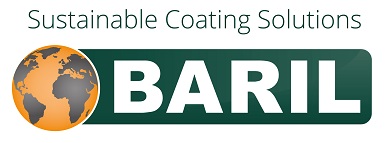1. BLASTING STANDARDS
In view of the large diversity of blasting agents and methods, it is only logical that various requirements have been formulated which must be complied with. These requirements also depend to a large extent on the treatment applied after the blasting process, although the latter generally consists of the application of a finish coating of paint. Various standards exist in this regard which also differ to some extent. In the Netherlands, the most common blasting standard used is the ISO (International Organization for Standardization) standard. In addition to blasting standards, there are also standards for so-called hand tool cleaning. As the ISO standard is the one most commonly used in the Netherlands, it will be fully dealt with. The ISO standard is available from the Nederlands Normalisatie Instituut (Dutch Normalization Institute).
2. ISO-8501-1:1988
ISO-8501-1:1988 standard for the rust grading of steel surfaces and standards for the preliminary treatment of these surfaces before they are treated with (corrosion-control) paint. This standard was formulated by the Swedish Corrosion Institute in cooperation with the American Society for Testing and Materials (ASTM), and the Steel Structures Painting Council (SSPC), and is used in specifications regarding the pre-treatment of surfaces before they are painted. The specifications in this standard apply to:
- The surfaces of hot-rolled steel in four different rust grades (A, B, C en D);
- The same surfaces which have been pre-treated in accordance with two different surface quality standards: hand tool cleaning (St 2) and power tool cleaning (St 3) with power wire brushes, power impact tools, power sanders etc.;
- The same surfaces which have been pre-treated in accordance with four surface quality standards for various types of blast cleaning (Sa 1, Sa 2, Sa 2½ and Sa 3).
3 PRELIMINARY TREATMENT STANDARDS
3.1 SCRAPING AND WIRE -BRUSHING
Rust grade |
Pictorial example |
Description |
| A |  |
Steel covered completely with adherent mill scale and with, if any, little rust. |
| B |  |
Steel surface which has begun to rust and from which the mill scale has begun to flake. |
| C |  |
Steel surface on which the mill scale has rusteds away or from which it can be scrapped, but with little pitting visible to the naked eye. |
| D |  |
Steel surface on which the mill scale has rusted away and on which considerable pitting is visible to the naked eye. |
It is assumed that, before this treatment takes place, the steel surface has been cleaned of dirt, oil and grease and that the worst instances of rust have been removed by chipping.
St 2 Thorough hand scraping, hand wire brushing, hand sanding, etc.: This treatment should remove all loose mill scale, rust, paint and contaminants. Finally, the surface must be cleaned with a vacuum cleaner, clean and dry compressed air, or a clean brush. The substrate should then have a faint metallic sheen. The surface should have the same appearance as illustrated in the St 2 series of pictures.
St 3 Very thorough hand scraping, hand wire brushing, hand sanding etc.: surface pre-treatment as in St 2 but much more thorough. After the fine particles have been removed, the surface should have a pronounced metallic sheen. The surface should have the same appearance as illustrated in the St 3 series of pictures.
3.2 BLAST CLEANING
It is assumed that, before this treatment takes place, the surface has been cleaned of dirt, oil and grease, and that the worst instances of rust have been removed by chipping.
Sa 1 Brush-off blast cleaning: leading to removal of loose mill scale, rust, paint and contaminants.
Sa 2 Thorough (Commercial) blast cleaning: leading to removal of nearly all mill scale, rust, paint and contaminants.
Sa 2½ Very thorough (Near-White) blast cleaning: leading to removal of practically all mill scale, rust, paint and contaminants to such an extent that only slight traces in the form of very light shadows or streaks remain behind.
Sa 3 White metal blast cleaning: leading to complete removal of all mill scale, rust, paint and contaminants.
The following applies in general to Sa 1, Sa 2, Sa 2½ and Sa 3: finally, the surface must be cleaned with the help of a vacuum cleaner, clean and dry compressed air, or a clean brush. The surface appearance must be the same as the picture illustrating the standard.
Initial steel condition (see also table 1) |
Cleaning standard |
A |
B |
C |
D |
| St2-Hand tool cleaning | Not applicable |  |
 |
 |
| St3-Power tool cleaning | Not applicable |  |
 |
 |
| Sa1-Brush-off blast | Not applicable |  |
 |
 |
| Sa2-Comercial blast | Not applicable |  |
 |
 |
| Sa2.5-Near white metal |  |
 |
 |
 |
| Sa3-White metal |  |
 |
 |
 |
4 SANDING BASE SURFACES AND COATINGS
This chapter deals with the preparation of surfaces for painting by sanding. Sanding is a treatment that can be carried out using coarse/or fine sandpaper and with or without the help of a sanding machine.
4.1 WHY SANDING?
There are various reasons for sanding, including:
- Smoothing and levelling out rough/uneven surfaces, irregularities, filler, welding seams etc.;
- Roughing up existing coating layers and base surfaces to ensure better adhesion;
- Rust removal.
